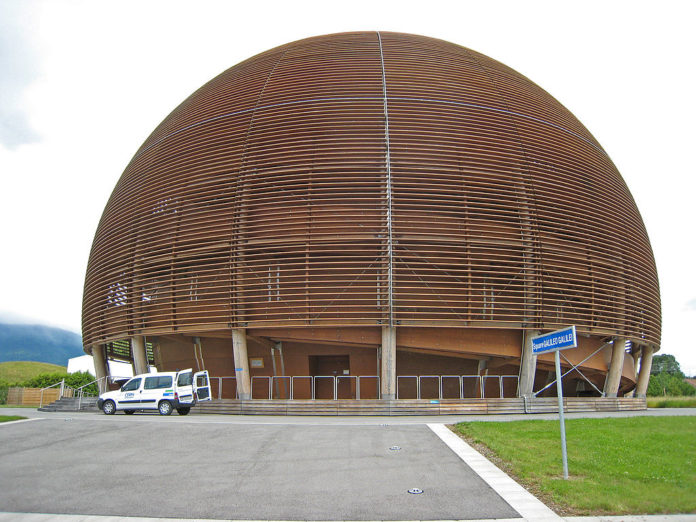CERN’s NA64 experiment is looking for the mysterious dark photon.
The concept of dark photons was first proposed in 2008 as a possible explanation for the movement of hydrogen in the Milky Way, which defies the rules of gravity. It is purported to be the fifth force, besides electromagnetism, gravity, and strong and weak nuclear forces. Since then, dark matter has been the subject of considerable research in the field of particle physics.
Eighty five percent of the universe is believed to be dark matter. It does not interact with conventional electromagnetic forces, and is, therefore, invisible to the eye and to the telescope. Its existence is widely accepted because its gravitational pull on visible matter has been observed. However, its origins remain a mystery.
It has been theorized that dark matter interacts with visible matter through a force other than gravity, but which has not yet been identified. Electromagnetic energy is carried via photons. Therefore, it is assumed that this as yet undetected force is transmitted via a particle called the ‘dark’ photon. It is envisaged to behave as a mediator between dark and visible matter.
“To use a metaphor, an otherwise impossible dialogue between two people not speaking the same language (visible and dark matter) can be enabled by a mediator (the dark photon), who understands one language and speaks the other one,” spokesperson for the NA64 collaboration, Sergei Gninenko explains, as reported phys.org.
The NA64 experiment looks for signatures of the interactions between visible and dark matter using the basic physics concept of the conversion of energy. A beam of electron is aimed at a detector. Contact between the electrons being beamed, and the atomic nuclei present on the detector produces visible photons. Their energy is measured. This should be equal to the initial energy of the beamed electrons, which was precisely measured. Disparities between the two will prove that dark photons exist, as they will have carried away a large portion of the initial energy. Their signature will also have been registered by the detector.
The success of this experiment will mark a breakthrough in human knowledge of dark matter.




























